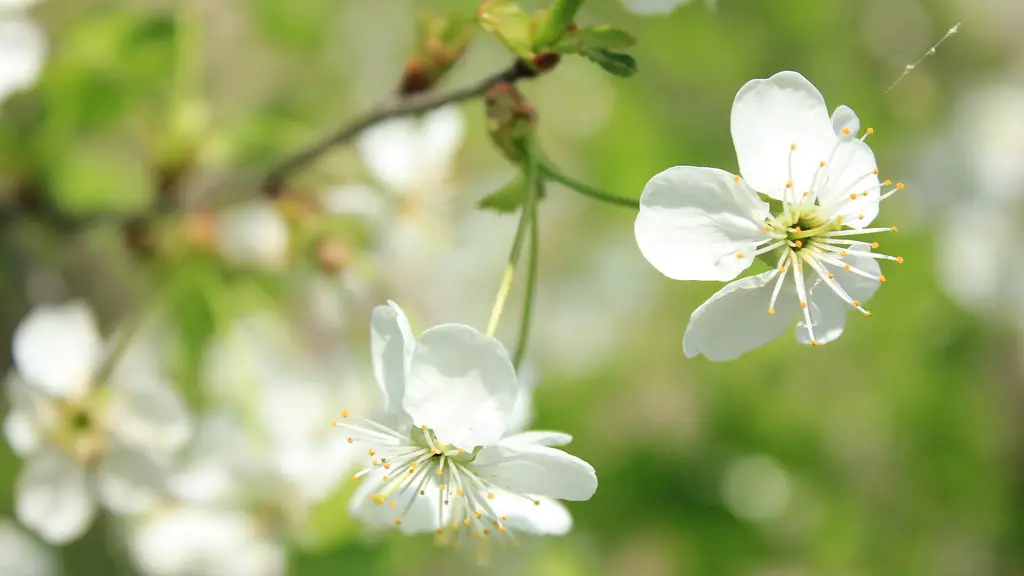Growing lemon trees from lemon seeds can be an exciting way to add a citrus tree to your home garden. The process isn’t difficult, but it will require some patience and effort. Here’s how to get started:
1. Gather the seeds. Collect ripe lemons and press or cut them open to remove the seeds. The seeds should be free of any white coating or mold. Rinse the seeds well and place them in a bowl.
2. Soak the seeds. Let the seeds soak in a container of warm water overnight. This softens their outer shells, which makes them easier to germinate.
3. Plant the seeds. Take a pot or container with well-draining soil. Place the seeds an inch deep in the soil and cover them with more soil.
4. Water your potting soil. Keep it damp but not overly wet, which helps the seeds germinate and encourages root growth.
5. Place the pot in a warm spot in your home. An area near a south-facing window is best.
6. Wait for it to sprout. Temperatures should stay above 65°F for the seedlings to germinate. This process can take up to several weeks, so be patient.
7. Transplant the seedlings into a bigger container. Once they have grown two or three inches tall, you can move them. Choose a pot with holes in the bottom and fill it with a nutrient-rich soil.
How to Care For the Lemon Tree
Lemon trees need lots of direct sunlight to stay healthy and produce lots of fruit. Place it in a sunny area in your garden, or if you keep it potted, an area with plenty of light. Depending on the size of your tree, citrus trees need anywhere from 1-4 inches of water every week. Monitor the soil and water as needed. Fertilize your tree every month with a balanced citrus fertilizer and prune it every year to keep it healthy.
If the leaves become yellow and the tree does not look healthy, it’s most likely due to a mineral deficiency. Iron and zinc deficiencies are the most common. Amend the soil with chelated minerals, which are available from garden retailers.
Finally, watch out for pests like mites, aphids, and aphids’ eggs. They can be a big problem, especially as temperatures rise and water evaporates quickly. Take extra precautions to ensure that your lemon tree is protected.
What to Do If Your Lemon Tree Doesn’t Produce Fruit
If your lemon tree isn’t bearing fruit, the first thing to do is to check the flowering stage. Lemon trees start producing flowers in late winter or early spring and the flowers will last until early summer. If your tree is in this stage, fertilize it with a citrus flower enhancer, which will ensure more flowers and fruit later in the season.
Another common problem is a lack of pollination. Bees and other insects play an important role in pollination and if there’s a shortage, it could be that your tree isn’t getting enough. Plant a few bee-friendly plants around your tree or use a paintbrush to transfer pollen from flower to flower to help your tree get pollinated.
If the weather has been unseasonably cold or especially hot, this can stop your lemon tree from flowering or producing fruit. Ensure that your tree gets the right amount of sun and water, and protect it during extreme weather if temperatures drop below freezing or rise too high.
Harvesting the Lemons
Lemons are ready for harvesting when the skin turns yellow and easily separates from the stem. Cut off the lemons with a pair of sharp scissors, making sure not to damage the plant. Keep in mind that some lemons may remain green even when ripe, so make sure to check the overall texture of the fruit.
Once picked, the lemons can be eaten fresh or used in various recipes. Lemons can also be stored in a cool, dry place away from direct sunlight. They should last up to two weeks when stored correctly.
Lemon trees can live a long time and produce fruits for at least 10 years. The tree itself can even reach heights of up to 12 feet in maturity. With the right care and soil conditions, your lemon tree should be able to thrive and produce plenty of fruit year round.
Deterring Pests and Diseases
When growing a lemon tree, one of the most common problems is pest infestation. Pests, such as scale and mites, can cause damage to your tree and reduce its fruiting potential. Inspect your tree regularly and use pest control products, such as neem oil, if needed. Citrus canker, a bacterial disease, is also very common in citrus trees and can potential lead to defoliation. To avoid this, make sure to inspect the leaves and twigs for signs of infection, such as galls and ulcers, and treat the affected area with an appropriate fungicide.
To keep your lemon tree healthy and free of any disease, practice good care and maintenance. Give the tree plenty of sunlight, water, and fertilizer, and make sure the soil is well draining. Adjust your care routine as needed to keep the tree in optimal shape and reap the most rewards.
Conclusion
Growing a lemon tree from lemon seeds is a rewarding experience. All you need is some patience and effort, and you can experience the joy of harvesting your own citrus fruits. With the right care and maintenance, you can enjoy your lemon tree for many years to come.



